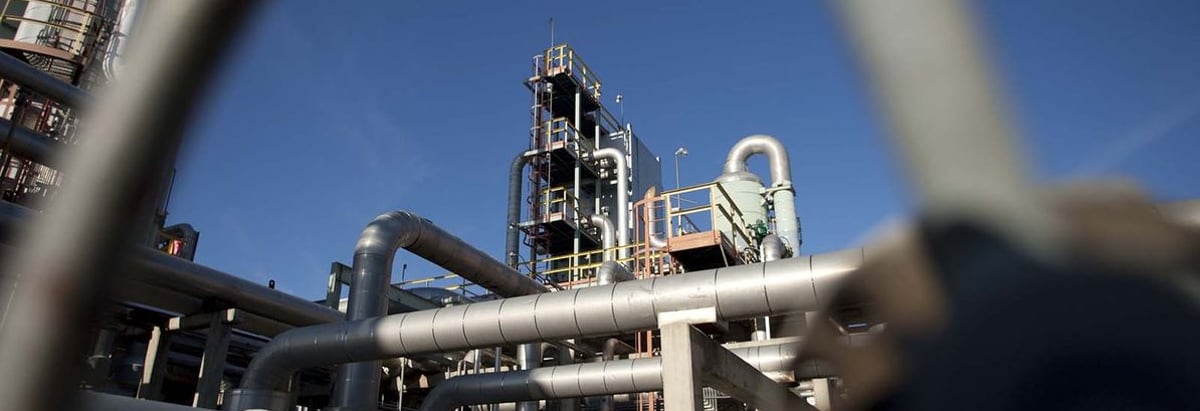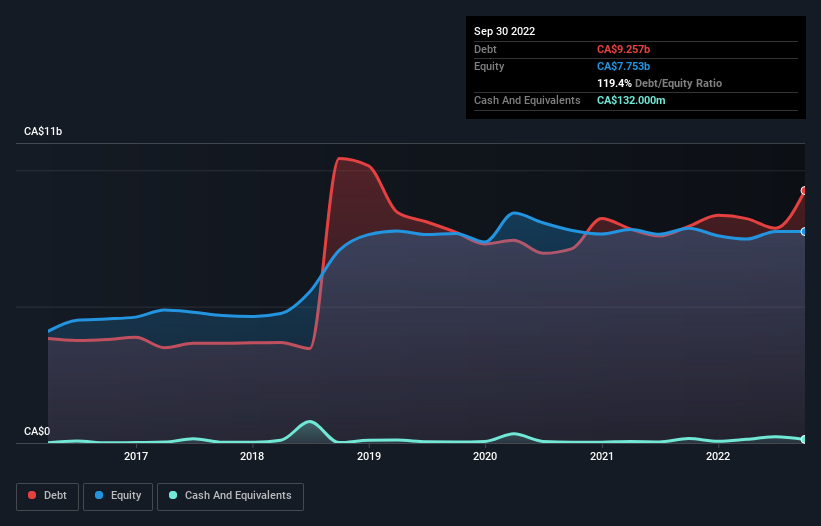- Canada
- /
- Gas Utilities
- /
- TSX:ALA
These 4 Measures Indicate That AltaGas (TSE:ALA) Is Using Debt In A Risky Way

Some say volatility, rather than debt, is the best way to think about risk as an investor, but Warren Buffett famously said that 'Volatility is far from synonymous with risk.' So it seems the smart money knows that debt - which is usually involved in bankruptcies - is a very important factor, when you assess how risky a company is. We note that AltaGas Ltd. (TSE:ALA) does have debt on its balance sheet. But is this debt a concern to shareholders?
When Is Debt A Problem?
Debt assists a business until the business has trouble paying it off, either with new capital or with free cash flow. Part and parcel of capitalism is the process of 'creative destruction' where failed businesses are mercilessly liquidated by their bankers. However, a more common (but still painful) scenario is that it has to raise new equity capital at a low price, thus permanently diluting shareholders. Having said that, the most common situation is where a company manages its debt reasonably well - and to its own advantage. When we examine debt levels, we first consider both cash and debt levels, together.
View our latest analysis for AltaGas
How Much Debt Does AltaGas Carry?
As you can see below, at the end of September 2022, AltaGas had CA$9.26b of debt, up from CA$7.94b a year ago. Click the image for more detail. Net debt is about the same, since the it doesn't have much cash.

How Strong Is AltaGas' Balance Sheet?
Zooming in on the latest balance sheet data, we can see that AltaGas had liabilities of CA$3.76b due within 12 months and liabilities of CA$12.0b due beyond that. On the other hand, it had cash of CA$132.0m and CA$1.50b worth of receivables due within a year. So its liabilities outweigh the sum of its cash and (near-term) receivables by CA$14.1b.
This deficit casts a shadow over the CA$6.59b company, like a colossus towering over mere mortals. So we'd watch its balance sheet closely, without a doubt. After all, AltaGas would likely require a major re-capitalisation if it had to pay its creditors today.
We use two main ratios to inform us about debt levels relative to earnings. The first is net debt divided by earnings before interest, tax, depreciation, and amortization (EBITDA), while the second is how many times its earnings before interest and tax (EBIT) covers its interest expense (or its interest cover, for short). This way, we consider both the absolute quantum of the debt, as well as the interest rates paid on it.
With a net debt to EBITDA ratio of 6.4, it's fair to say AltaGas does have a significant amount of debt. However, its interest coverage of 3.4 is reasonably strong, which is a good sign. Even more troubling is the fact that AltaGas actually let its EBIT decrease by 9.5% over the last year. If that earnings trend continues the company will face an uphill battle to pay off its debt. The balance sheet is clearly the area to focus on when you are analysing debt. But ultimately the future profitability of the business will decide if AltaGas can strengthen its balance sheet over time. So if you want to see what the professionals think, you might find this free report on analyst profit forecasts to be interesting.
Finally, a company can only pay off debt with cold hard cash, not accounting profits. So the logical step is to look at the proportion of that EBIT that is matched by actual free cash flow. Over the last three years, AltaGas recorded negative free cash flow, in total. Debt is usually more expensive, and almost always more risky in the hands of a company with negative free cash flow. Shareholders ought to hope for an improvement.
Our View
On the face of it, AltaGas's net debt to EBITDA left us tentative about the stock, and its level of total liabilities was no more enticing than the one empty restaurant on the busiest night of the year. And furthermore, its EBIT growth rate also fails to instill confidence. It's also worth noting that AltaGas is in the Gas Utilities industry, which is often considered to be quite defensive. Taking into account all the aforementioned factors, it looks like AltaGas has too much debt. That sort of riskiness is ok for some, but it certainly doesn't float our boat. The balance sheet is clearly the area to focus on when you are analysing debt. But ultimately, every company can contain risks that exist outside of the balance sheet. Case in point: We've spotted 3 warning signs for AltaGas you should be aware of, and 2 of them are potentially serious.
When all is said and done, sometimes its easier to focus on companies that don't even need debt. Readers can access a list of growth stocks with zero net debt 100% free, right now.
New: Manage All Your Stock Portfolios in One Place
We've created the ultimate portfolio companion for stock investors, and it's free.
• Connect an unlimited number of Portfolios and see your total in one currency
• Be alerted to new Warning Signs or Risks via email or mobile
• Track the Fair Value of your stocks
Have feedback on this article? Concerned about the content? Get in touch with us directly. Alternatively, email editorial-team (at) simplywallst.com.
This article by Simply Wall St is general in nature. We provide commentary based on historical data and analyst forecasts only using an unbiased methodology and our articles are not intended to be financial advice. It does not constitute a recommendation to buy or sell any stock, and does not take account of your objectives, or your financial situation. We aim to bring you long-term focused analysis driven by fundamental data. Note that our analysis may not factor in the latest price-sensitive company announcements or qualitative material. Simply Wall St has no position in any stocks mentioned.
About TSX:ALA
Fair value low.
Similar Companies
Market Insights
Community Narratives



